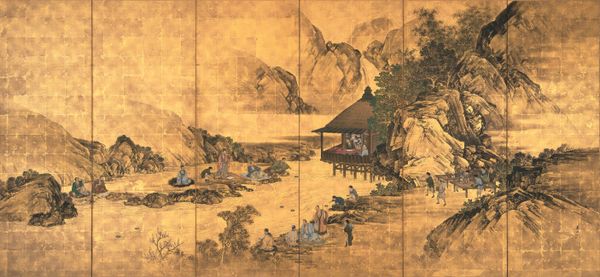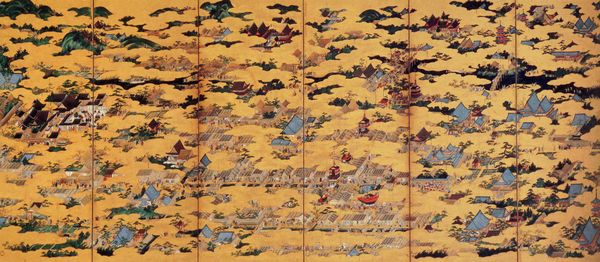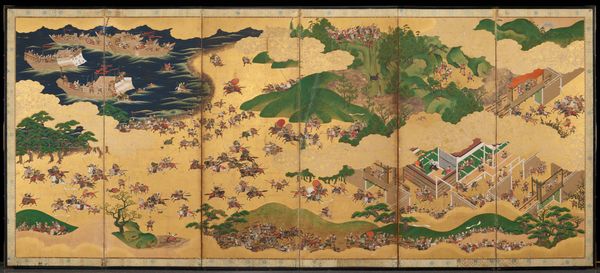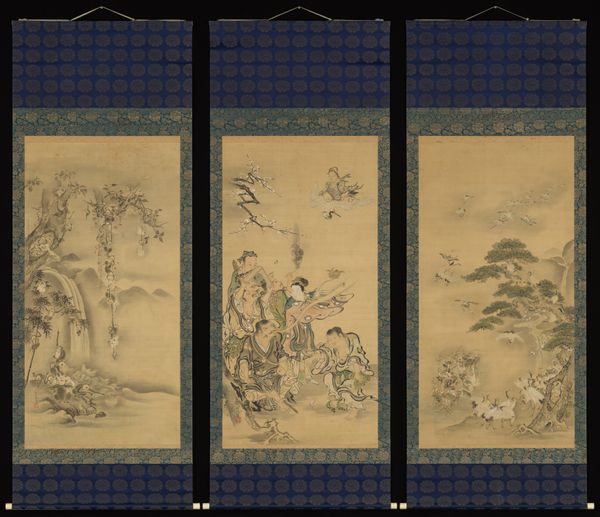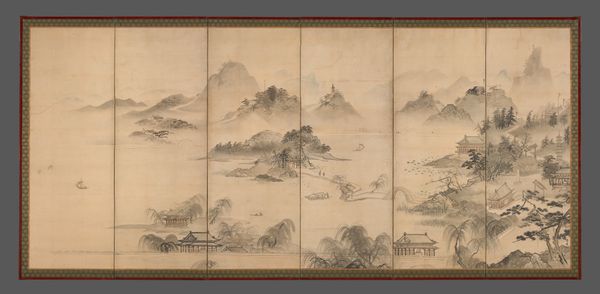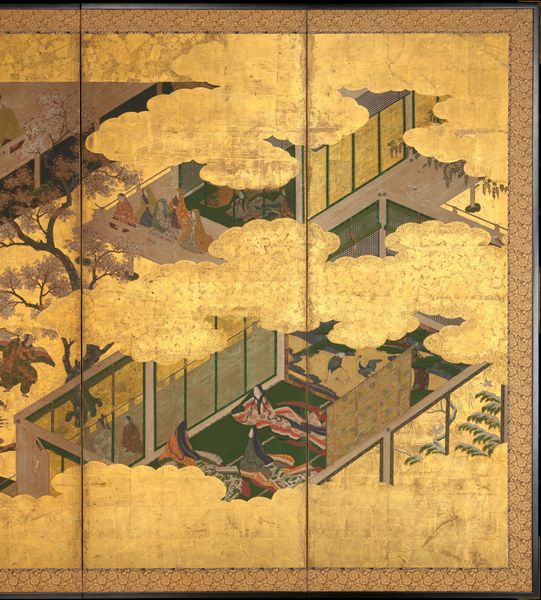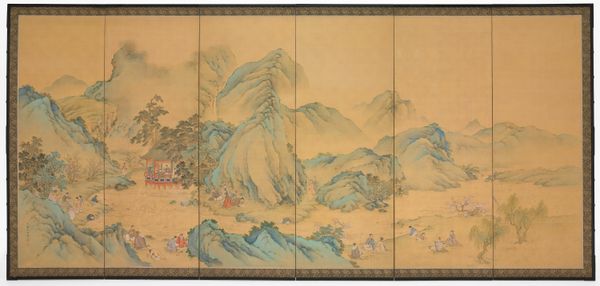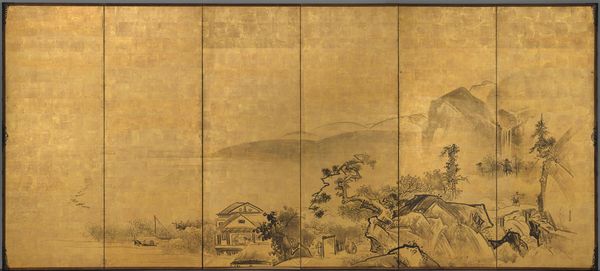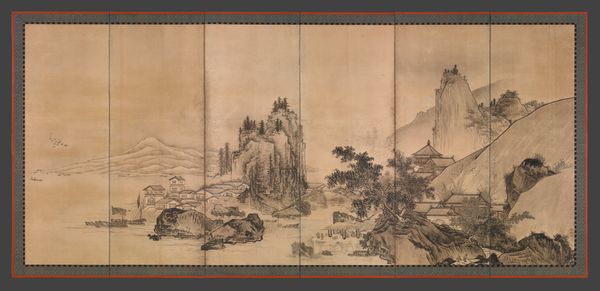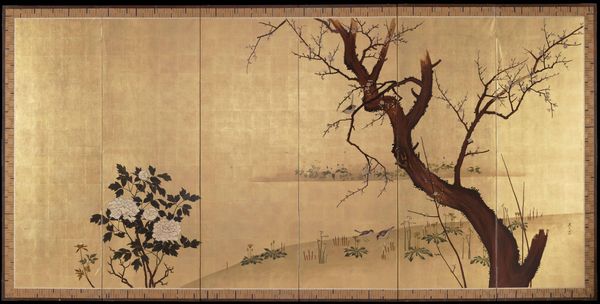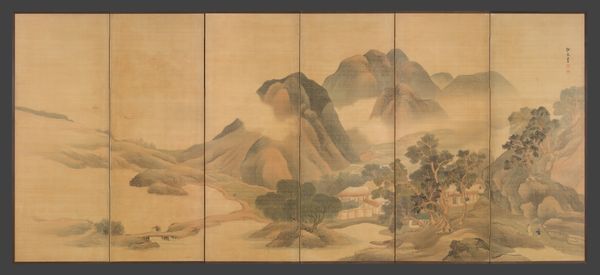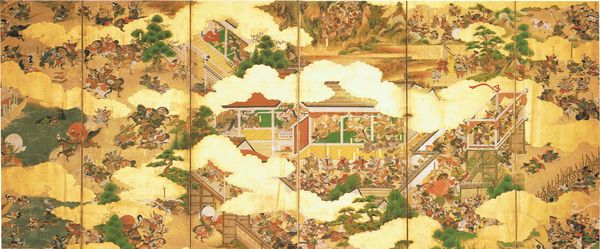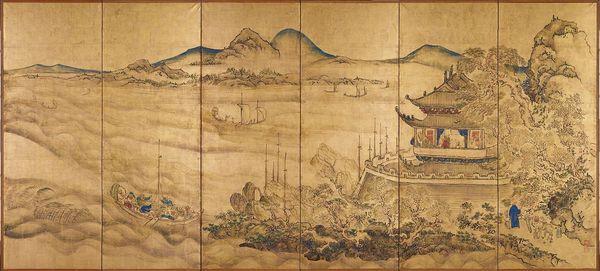
painting, textile, ink
#
ink painting
#
painting
#
pattern
#
asian-art
#
landscape
#
textile
#
ink
#
yamato-e
Copyright: Public domain
Curator: This striking six-panel screen, dating to around 1560, is attributed to Kanō Eitoku, one of the most important figures in the Kanō school of painting. It’s rendered in ink and color on paper, and depicts “Famous Views of Sagano” on the top and “Famous Views of Uji” below. Editor: The screen breathes! Even with the buildings and people represented, the undulating gold background creates an atmosphere that evokes a specific memory of travel, doesn't it? The eye follows the roads through the landscape and almost participates in an idealized, picturesque pilgrimage. Curator: Indeed. The composition follows a convention within the Yamato-e tradition, framing notable sites within an idealized landscape, catering to the desires of the ruling samurai class. Works like this screen also legitimized the Kano school's prominent status within the art world of the era. Editor: Look how tiny the human figures are compared to the architecture and especially the natural forms. The architecture stands for dominion but it seems as though nature's size serves to subtly but surely represent her as an emblem for strength, power, permanence, or maybe simply longevity? Curator: It also subtly reinforces a political message, grounding social hierarchies within the cosmic order. The nobility occupies their designated spaces, reflecting an idealised feudal society which this painting may both describe and reinforce the social desire to exist. Editor: Fascinating how the color blue repeats from the rooftops to water motifs, and that specific placement acts as another guiding path that unifies each half of this six panel work. What else does that tell us, curator? Curator: These subtle iconographic connections likely resonate with the courtly culture of the time, offering an invitation to contemplate these landscapes. It speaks volumes about the elite patronage sustaining artistic traditions, serving not just decorative, but ideological purposes, within Japan’s transition into the early Edo period. Editor: That final comment frames the screen in its world and historical moment but returning to it afresh and armed with some of your perspective, it retains that ineffable, ethereal sense of a memory—something longed for, something just out of reach, that has an individual truth, regardless. Curator: Well, it's nice to imagine this resonates so deeply after all these years and all these changing sociopolitical attitudes.
Comments
No comments
Be the first to comment and join the conversation on the ultimate creative platform.
